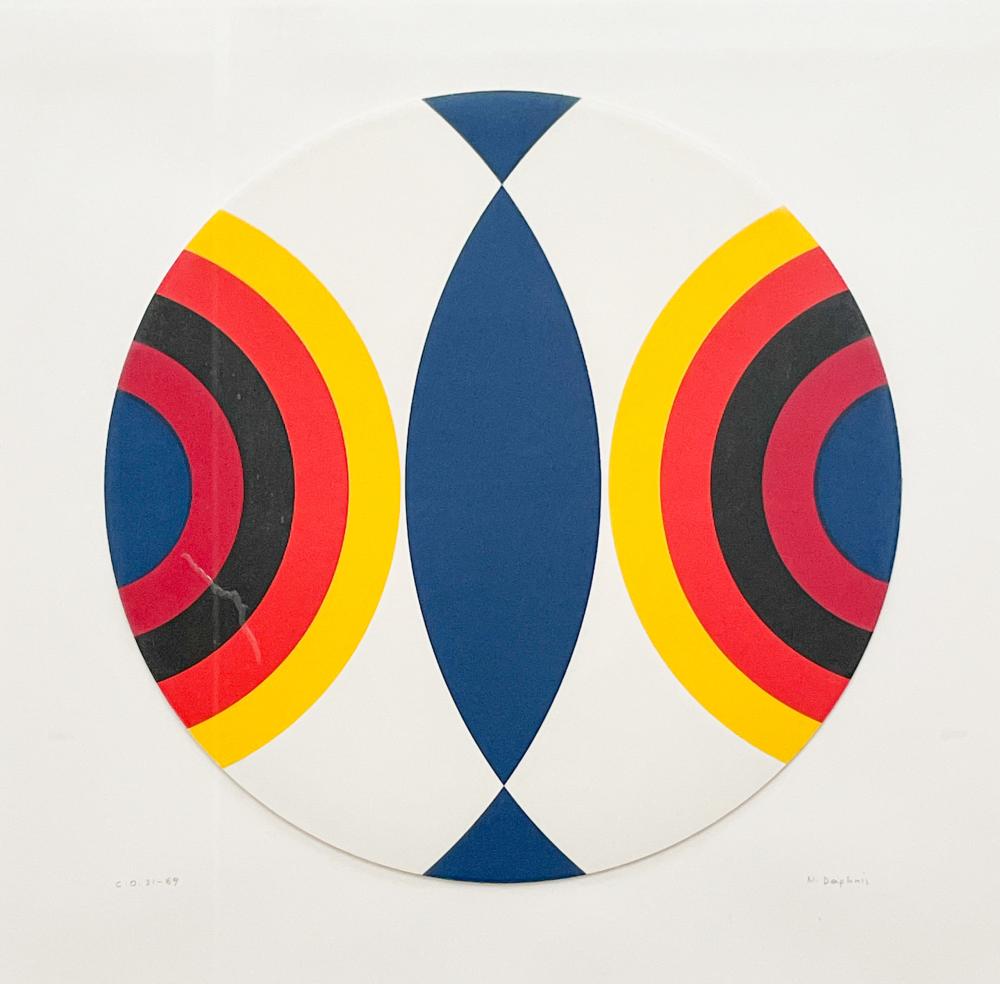(July 23, 1914 – November 23, 2010)
The Greek-born American artist Nassos Daphnis (1914-2010) was a major figure in the 20th Century art world and is recognized for his mastery of geometric abstraction and his evolution into what became known as Hard-Edge Painting.
Daphnis was actively supported by the Leo Castelli Gallery for 39 years, who placed his work in some of the best museum collections around the world (Guggenheim, Whitney, MoMA, to name a few). He also gave him 17 solo shows, making him the 3rd most exhibited artist of Leo Castelli Gallery, right after Jasper Johns (19 solo shows) and Robert Rauschenberg (18 solo shows). In addition to his solo exhibitions at Leo Castelli Gallery, Daphnis was featured in 23 group shows alongside John Chamberlain, Ellsworth Kelly, Edward Ruscha, Richard Serra, Frank Stella, Cy Twombly, among others.
In describing the work of Nassos Daphnis, Leo Castelli has said, “His paintings were more rigorous than the other geometric painters. From the day I saw his first slides I recognized this, and that he differed also because there was no hint of anything that should suggest sentiment. Sentimentality of any type was ruled out.”
Daphnis was one of the pioneers of the Minimalist school of New York. Well-known New York art critic April Kingsley wrote, “Some of Daphnis’ paintings from the later 50s are so radical you’d assume they’d been painted at least 10 to 15 years later. His devotion to purity predicts 60s minimalism; his systemic approach predates systemic painting.”
In the 1950’s when Barnett Newman was doing his stripe paintings with traditional brush strokes, Daphnis had already introduced the roller in order to erase the human touch and reached the perfection he always strived for.
In 1958, Daphnis developed his Color & Plane Theory to liberate color from the restriction of form. In doing so, he used multiple planes of solid color to create the illusion of depth, space, and movement amid smooth, uninterrupted surface textures.
The interplay of Daphnis’ carefully chosen palette and dynamic shapes results in a vibrating, tension-ridden energy that allows color to be the primary element of the work, unconstrained by line or form.
Nassos Daphnis remained outside recognized schools and moved fluidly among emerging styles, with one goal — to reach perfection. He remains a pioneer of the Hard-Edge Geometric abstraction and managed through his colossal work to overcome all the most difficult techniques and challenges by pioneering: magna painting (1958), Plexiglas sculpture (1962), epoxy painting (1966), giant-scale murals (1969), Gestält Arc Series (1976), and computer-generated works (1985).
In 1967, Nassos Daphnis was one of the co-founders of City Walls Inc. together with Richard Anuszkiewicz, Jason Crum, Knox Martin, Mel Pekarsky, Tania, Robert Wiegand, and other notable painters of the period.
Daphnis has been the recipient of numerous prestigious art awards. He was named a Guggenheim Fellow in 1977 and received the Francis J. Greenburger Foundation Award and the Pollock-Krasner Foundation Award in 1986. Daphnis’ works are in the collections of the Guggenheim Museum, NY; Whitney Museum of American Art, NY; Museum of Modern Art, NY; Albright-Knox Gallery, Buffalo, NY; Metropolitan Museum of Art, NY; Hirschhorn Museum and Sculpture Garden, Washington, DC; Tel Aviv Museum, Israel; or Basil Goulandris Museum, Greece, to name a few.
Daphnis had 123 exhibitions during his lifetime, both domestic and international: 90 group shows and 33 solo shows, including four retrospective museum exhibitions: Nassos Daphnis Work since 1951 at the Albright-Knox Art Gallery (March 9th – April 13th 1969) in Buffalo, NY, which traveled to the Everson Museum of Art (May 1st – June 29th 1969) in Syracuse, NY.
